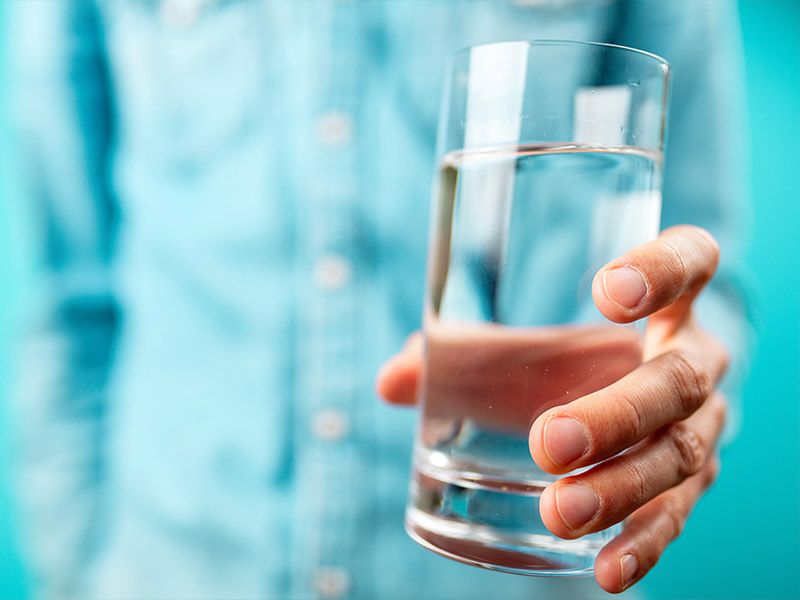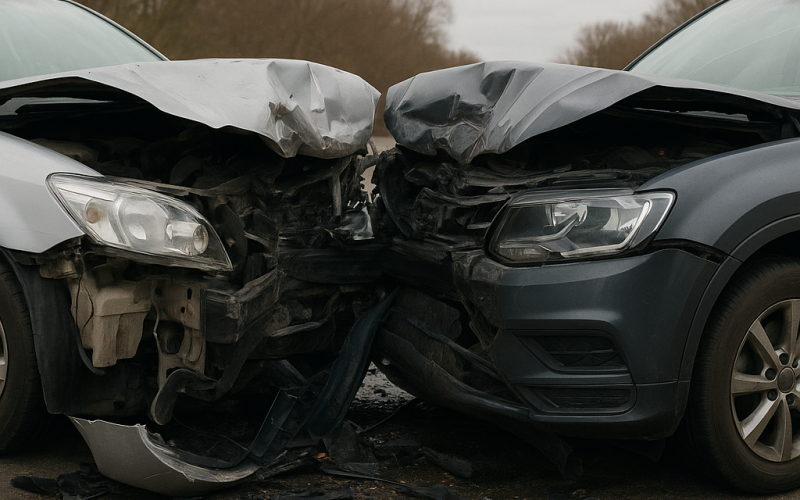Camp Lejeune Water Contamination Illnesses and Symptoms



Finding out you have been diagnosed with any type of cancer can be a stressful and painful time for you and your loved ones. Knowing it could have been caused by water contamination and potentially years of exposure is heartbreaking and frustrating, especially when contaminated water pollution could have been prevented.
Sadly, this occurred at the Camp Lejeune military base located near Jacksonville, North Carolina. This widespread and long-term exposure has potentially harmed countless people who worked or lived at the Camp Lejeune military base.
In August 2022, the U.S. Senate passed the Camp Lejeune Justice Act of 2022, which empowers service members and other qualifying individuals who were injured by their exposure to water contamination to pursue damages for the harm they have suffered. Furthermore, the U.S. government is not permitted to assert “specified immunity from litigation” in response to any lawsuits filed against them relating to Camp Lejeune contamination.
Finally, the numerous victims suffering serious health issues, such as leukemia, non-Hodgkin’s lymphoma, a variety of cancers, and other health conditions, can now get the health care they need through compensation via a Camp Lejeune water contamination lawsuit.
The caring and passionate personal injury lawyers at HawkLaw, P.A. are ready to help you seek the compensation you deserve for your injuries or losses. Contact our law firm at 888-HAWKLAW as soon as possible for a free consultation or case evaluation.*
How Did the Camp Lejeune Water Contamination Occur?
Sadly, for decades, anyone living or working for more than 30 days at Camp Lejeune between August 1, 1953, and December 31, 1987, was exposed to the toxic contaminants. The problems were discovered in 1982 when the U.S. Marine Corps discovered specific volatile organic compounds (commonly referred to as VOCs) in high concentrations in some of the base’s drinking water sources. Here is what we know so far.
Tarawa Terrace Water Treatment Plant
The Tarawa Terrace Water Treatment Plant was contaminated due to the waste disposal practices of an off-base dry cleaners store called ABC One-Hour Cleaners. The most contaminated wells were shut down in February 1985. The contamination from Tarawa Terrace occurred for 336 months over the course of 30 years.
Hadnot Point Water Treatment Plant
The Hadnot Point Water Treatment Plant was contaminated mainly due to leaking storage tanks, industrial spills, and waste sites. The specific primary contaminant coming from this treatment plant was TCE (trichloroethylene), but there were others as well.
Tragically, these contaminants can cause serious adverse impacts on the lives of the victims who are exposed to harmful chemicals when doing everyday things, ranging from drinking a glass of water to cooking meals to doing laundry. Imagine the heartbreak of experiencing severe negative health effects when doing something healthy for yourself, like drinking water.
Volatile Organic Compounds Found at Camp Lejeune
Studies found harmful VOCs in both of these two water treatment plants, which directly affected the water supply at Camp Lejeune. This means military members, family members living on base, contractors, government workers, and anyone else assigned routinely on base were exposed to toxic water.
Tetrachloroethylene (Perchloroethylene)
The tetrachloroethylene chemical is a solvent primarily used in the dry cleaning, textile processing, and metal cleaning processes. This toxic chemical appears in liquid form as colorless with a mild odor. Exposure to this chemical causes adverse reactions in people, and those working with it need to be extra careful. If people working with it need precautions, humans should certainly not be drinking it.
Trichloroethylene (TCE)
TCE is a degreasing solvent for metal that is used to make refrigerants and other hydrofluorocarbons. Other products it is used in include aerosol cleaning products, tool cleaners, cleaning wipes, paint removers, and carpet cleaners, to name a few. The chemical is both volatile and colorless and presents in liquid form. Dry cleaners actively use it as a spot remover and the U.S. military uses it to degrease equipment.
This VOC does not occur naturally and can only be derived by chemical synthesis. When it is present in drinking water, it is incredibly harmful. In fact, people who work with or near it are advised to wear protective gear to minimize exposure.
Vinyl Chloride
Vinyl chloride is a colorless gas used to make a variety of plastic products. It is only for commercial use and can only be produced in an industrial setting; it does not occur naturally. This chemical burns easily and is primarily created to make polyvinyl chloride (PVC), which is widely used in products such as pipes, cable coatings, wires, packaging materials, and more. This chemical exposure occurs through inhalation, but in water supply contamination, vinyl chloride enters household air when water turns into steam, such as showering, cooking, and laundry.
Benzene
Benzene is a highly flammable chemical primarily used to make other chemicals, along with some types of rubber and lubricant. It is either colorless or light yellow in liquid form when at room temperature. It has a tendency to evaporate into the air quickly, but since its vapor is heavier than the air, it can sink into low-lying areas. When it lands on water, it mostly floats on top. It can be toxic when people are overexposed to this chemical’s presence.
According to the Agency for Toxic Substances and Disease Registry (ATSDR), an organization heavily involved with pursuing this issue and providing data analysis, it is estimated the Tarawa Terrace Water Treatment Plant contamination created an excess presence, according to EPA standards, of PCE (perchloroethylene or tetrachloroethylene).
The Hadnot Point Water Treatment Plant generated excess amounts of TCE, and other contaminants, including “PCE and benzene and TCE degradation products trans-1,2-DCE (t-1,2-dichloroethylene) and vinyl chloride.” At least one of these VOCs exceeded the current EPA maximum contaminant level permitted in drinking water between August 1953 and January 1985.
What Are the Symptoms of Camp Lejeune Water Contamination?
TCE
A known carcinogen, too much exposure to TCE can cause dizziness, nausea, sleepiness, headaches, confusion, liver damage, or death. It is also irritating to your eyes and skin.
PCE
The U.S. Environmental Protection Agency (EPA) classifies PCE as a likely human carcinogen. When people are exposed to PCE, it can harm their nervous system and impact visual memory and processing. It can also increase the risk of getting cancer and liver/kidney damage. Victims also suffer headaches and may struggle with muscle coordination.
Benzene
Exposure to benzene can cause harm to unborn children, as well as dizziness, drowsiness, increased heartbeat, vomiting, headaches, confusion, excessive bleeding, and death (at very high levels). Consuming benzene can cause vomiting, stomach irritation, and convulsions, along with the symptoms related to general exposure. Cancer is also unfortunately a common effect. Exposure can also affect bone marrow.
Vinyl Chloride
People who suffer from vinyl chloride exposure can experience dizziness, headaches, decreased fertility or infertility, developmental issues, kidney problems, and tingling in the arms/legs. Problems associated with short-term exposure include irritation of the nose, throat, eyes, and lungs. Long-term exposure to vinyl chloride can increase the risk for various cancers, such as liver, brain, lung, leukemia, and lymphoma.
Presumptive Conditions Caused by the Water Contamination at Camp Lejeune?
The ATSDR is studying a number of conditions that are believed to be connected to the contamination at Camp Lejeune. Individuals who have been afflicted with the following illnesses and meet the criteria of spending at least 30 days at Camp Lejeune between 1953 and 1987 are automatically assumed by the VA that these sicknesses were caused by the toxic water present during this timeframe.
Bladder Cancer
Bladder cancer is frequently linked to PCE and, while treatable, has a high recurrence rate. People who have been diagnosed with bladder cancer need ongoing monitoring and probable additional treatment. Symptoms of bladder cancer include frequent urination, painful urination, blood in urine, and back pain.
Lung Cancer
The chemicals found in Camp Lejeune are linked to lung cancer. Symptoms often include the coughing up of blood, a persistent cough, chest pain, shortness of breath, unexplained weight loss, bone pain, hoarseness, and even headaches.
Adult Leukemia
This type of cancer affects the human body’s blood-forming tissues and does include the lymphatic system and bone marrow. Symptoms of adult leukemia include:
- Consistent fatigue
- Persistent weakness
- Fever and chills
- Unexplained weight loss
- Easy bleeding or bruising; reoccurring nosebleeds
- Frequent infections
- Swollen lymph nodes
- Petechiae (small pin-sized spots on the skin)
- Heavy sweating
- Bone pain/tenderness
A combination of these symptoms may indicate the presence of leukemia in a victim’s body.
Aplastic Anemia
Aplastic Anemia is part of a group of disorders known as myelodysplastic syndromes (MDS). This degenerative condition causes shortness of breath, fatigue, paleness, petechiae, frequent infections, and easy bruising and bleeding.
Breast Cancer
Cancer in the breasts mostly occurs in women, but men can also develop the disease. Symptoms of breast cancer include changes in size, shape, or appearance of one or both breasts, lumps or thickening in breast tissues, peeling or flaking or other changes in the areola or skin, newly inverted nipple, redness or pitting of skin, and any changes in the skin over the breast, including dimpling.
Kidney Cancer
Cells in the kidney that have mutated often turn cancerous, and TCE is strongly linked to this form of cancer. Symptoms of kidney cancer include fatigue, back pain that does not go away, loss of appetite, unexplained weight loss, and blood in the urine.
Liver Cancer
Liver cancer has been increasingly linked to TCE exposure. Victims with this type of cancer often experience a loss of appetite, nausea, vomiting, fatigue, weakness, upper abdominal pain, swelling in the abdomen, jaundice, and white chalky stools.
Non-Hodgkin’s Lymphoma
This form of cancer attacks the body’s immune system (known as the lymphatic system) and can be quick-spreading. Often the cancer starts in the lymph nodes, but then can rapidly spread to adenoids, spleen, tonsils, thymus, and bone marrow. Common symptoms of non-Hodgkin’s lymphoma include abdominal pain, abdominal swelling, chest pain, coughing, difficulty breathing, fever, night sweats, persistent fatigue, unexplained weight loss, and swollen lymph nodes (usually in the neck, armpits, and groin).
Renal Toxicity
If a person’s kidneys lose their ability to filter toxins and chemicals that have entered the blood, unsafe levels may accumulate and rapidly spread through the renal system if not promptly addressed with proper treatment. Symptoms of renal toxicity include fluid retention, swelling in extremities such as feet, legs, and ankles, fatigue, shortness of breath, irregular heartbeat, chest pain, pressure in the chest, confusion, and seizures. In extreme cases, a victim may fall into a coma.
Esophageal Cancer
This cancer occurs in the long, narrow passageway that connects a person’s throat to their stomach. When the esophagus’ tissue turns cancerous, victims may experience trouble swallowing, chest pain, pressure in the chest, coughing, unexplained weight loss, burning sensations in the chest, heartburn or indigestion that does not get relief, and hoarseness.
Parkinson’s Disease
Parkinson’s disease is recognized by a loss of motor control that worsens as time passes. As a progressive nerve disorder, the body’s neurons slowly break down over time, and its ability to produce dopamine is affected. Symptoms of Parkinson’s disease include slowed movement, tremors, difficulty with balance and posture, changes in speech, changes in writing, and rigid muscles. It is also common for people with Parkinson’s to begin to lose their automatic movements as they cannot control them any longer.
Multiple Myeloma
This cancer forms in a person’s plasma cells which directly affects their white blood cells, hindering their ability to fight infections. Unfortunately, multiple myeloma cells reproduce rapidly and can overwhelm healthy cells. People suffering from multiple myeloma may experience:
- Nausea
- Loss of appetite
- Frequent infections
- Feelings of fogginess or confusion
- Fatigue
- Unexplained weight loss
- Bone pain
- Weakness in legs
- Numbness in legs
Often attributed to exposure to PCE, individuals suffering from multiple myeloma also experience excessive thirst.
Neurobehavioral Effects
Exposure to harmful chemicals can also have neurobehavioral effects on a person who came into close contact with the types of toxins found at Camp Lejeune. This healthcare classification is for ailments that directly impact the body’s nervous system and human behavior. Symptoms include dementia, difficulty with concentration, poor memory, insomnia, fatigue, PTSD, and motor problems.
As the study continues, it is possible other health problems will emerge as a common suffering across the thousands of Camp Lejeune water contamination victims, such as scleroderma, hepatic steatosis, birth defects, myelodysplastic syndromes, and other health problems affecting the body, its blood cells, tissues, and organs.
Even with additions that have not been fully identified, the list is far from exhaustive. If you or a family member spent time at Camp Lejeune and meet the eligibility factors, you should speak to a knowledgeable attorney right away. As the study progresses, more and more diseases are likely to be discovered with links to chemical exposure. You only have until August 10, 2024, to bring forth a claim, so you should contact a lawyer right away if you suspect you qualify for compensation.
What Is the Camp Lejeune Cancer Rate?
The ATSDR began a study in 2018 to examine the cancer rate in individuals who were stationed or working in Camp Lejeune during the time of contaminated water. It is important to keep in mind, this complex study has yet to be completed and is expected to take about five years due to the widespread potential contamination and the huge number of potential victims of exposure to hazardous chemicals.
What Are the Symptoms of Neurobehavioral Effects?
The phrase “neurobehavioral effects” is specific terminology that relates to the relationship between the nervous system’s ability to function and behaviors that emerge due to deficits in this symbiotic relationship.
Victims who experienced long-term exposure to the chemicals found in the Camp Lejeune treatment water system and in the water supply may have developed problems with their nervous system. Symptoms include headaches, coordination issues, motor function, reaction time, trouble concentrating, problems with paying attention, and contrast sensitivity.
Individuals suffering from the neurobehavioral effects associated with chemical exposure may also struggle with learning and behavioral disorders.
How Much Is the Compensation for Camp Lejeune Water Contamination?
Since this act was just signed in August 2022 by Congress, at this time there are no previous verdicts to use as a baseline to try to ascertain settlement amounts. How much compensation each victim receives is likely to vary and will be dependent on exposure and how it has affected them. However, there is substantial evidence to suggest a great number of people have suffered unexplained health issues over the last several decades.
Should I Hire an Attorney for My Water Contamination Lawsuit?
Working with an attorney for any personal injury lawsuit is in your best interest. You want a knowledgeable professional at your side who will fight for you and what you need. The attorneys at HawkLaw want what is in your best interest and will aggressively advocate for your rights and needs. As highly experienced personal injury lawyers, the HawkLaw team knows the legal process well and will work hard on your water contamination lawsuit.
Your attorney can carefully examine your medical records, review your settlement for fairness, and determine what you are eligible to pursue in terms of disability benefits, disability compensation, VA disability benefits from the Department of Veterans Affairs, and more.
Time is Running Out to File a Water Contamination Lawsuit!
If you or a loved one lived, worked, or were otherwise stationed for military service at Camp Lejeune between August 1, 1953, and December 31, 1987, for more than 30 days, you may be eligible for compensation due to the unacceptable and dangerous exposure you may have suffered.
HawkLaw is a law office that has experience in all types of personal injury cases. Our legal team is here to you to support you. Contact us today at 888-HAWKLAW or fill out our convenient online contact form. Our personal injury attorneys will examine the details of your case and ascertain your eligibility.
You deserve a voice in the massive wrongs done to so many people over the years. HawkLaw fights to win. We will not be intimidated by the federal government and will stand with you every step of the way as we work hard to get you the compensation you deserve.
John D. Hawkins
John Hawkins is the Founder and CEO of HawkLaw He has been licensed to practice law in South Carolina since his graduation with honors in 1994 from the University of South Carolina School of Law, where he was on the Law Review and Order of Wig and Robe.
-
$3,000,000*SettlementTrucking Accident
-
$1,005,000*SettlementCar Accident
-
$575,000*SettlementPersonal Injury
"*" indicates required fields












